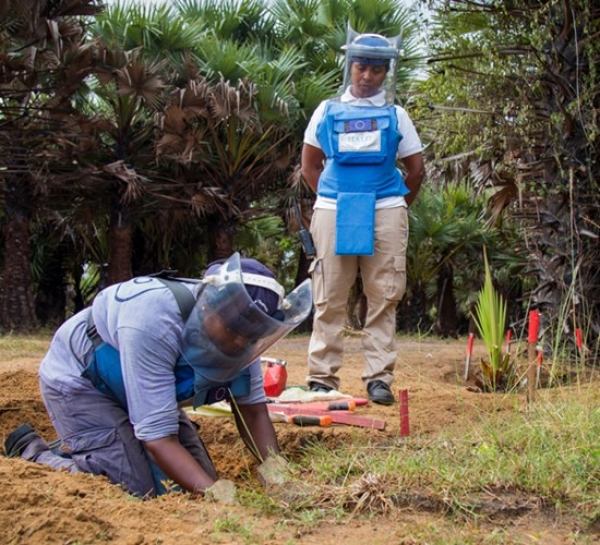In May this year, the HALO Trust team cleared their 700th minefields in the protected Kovikoduthavil Forest Reserve. The HALO Trust is the world’s largest humanitarian mine clearance non-profit organisation based in the United Kingdom and the United States. Since 2002, HALO has found and destroyed an estimated 250,000 landmines across the northern provinces of the Jaffna peninsula, Kilinochchi and Mullaitivu.
The landmines were planted during Sri Lanka’s Civil war which forced more than 300, 000 families to flee their homes due to the dangerous conditions they brought. Even though the war ended in 2009, many Sri Lankan civilians did not return home since the areas were still surrounded by landmines.
The Mines Advisory Group (MAG) International confirmed that in 2019, approximately “1.25 million square meters of land is declared safe,” and their team has removed 5,104 “dangerous items” such as landmines, unexploded ordinances, small arms and ammunition in the northern provinces of Mannar, Vavuniya and Mullaitivi.
These efforts are a part of Sri Lanka’s government’s National Mine Action Strategy 2016-2020 which set a goal to become mine free by 2020. Valentina Stivanello, MAG’s country director for Sri Lanka, has declared that the strategy has been relaunched, and that “Under Article 5 of the Mine Ban Treaty, Sri Lanka is required to destroy all anti-personnel mines in mined areas under its jurisdiction or control by not later than 1 June 2028.”
Areas in the northern province are still considered to be one of the most militarized regions anywhere in the world and have one the heaviest concentrations of landmines. According to the Landmine and Cluster Munition Monitor initiative, from 2010 to 2018, land contaminated with landmines fell from 506 square kilometres to 25.8 square kilometres. However, the initiative considers the extent of this contamination as “heavy” since the land in the areas concerned are what civilians would use for farmland and agriculture.
HALO reported that many civilians are living very close to areas still highly contaminated with landmines. According to Landmine Monitor, over 20, 000 people have been killed or injured by landmines and other explosives in Sri Lanka since the beginning of the war.
To read more, please visit:
https://reliefweb.int/report/sri-lanka/halo-sri-lanka-clears-700-minefields
https://www.halotrust.org/where-we-work/south-asia/sri-lanka/
http://www.the-monitor.org/en-gb/reports/2019/sri-lanka/mine-action.aspx
https://thediplomat.com/2020/01/sri-lankas-landmine-legacy/
Author: Catherine Gregoire; Editor: Sara Gorelli







